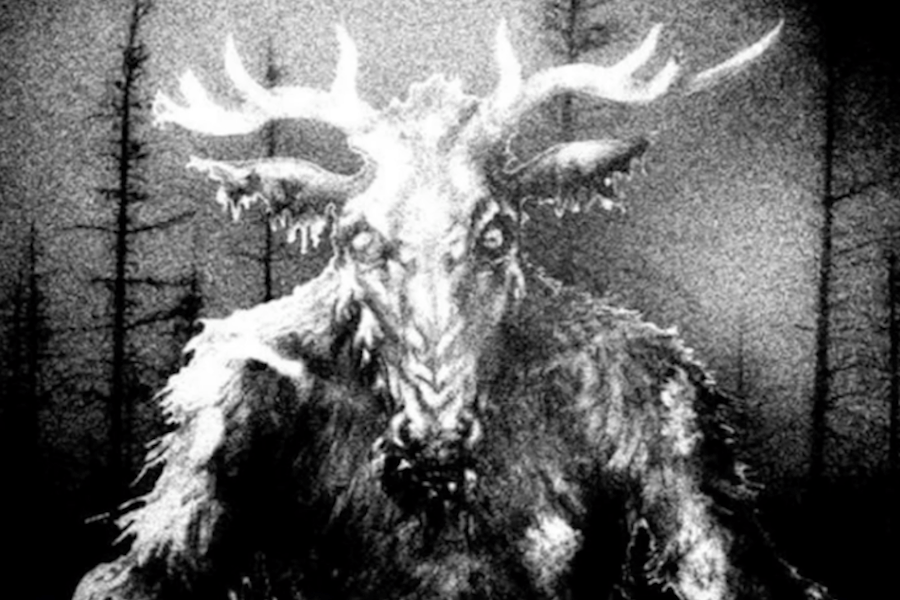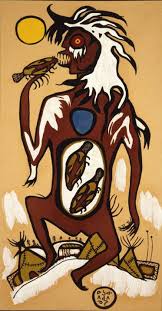The Wendigo’s Hunger: A Deeper Look Into The Myth
The Legend Of The Wendigo
DISCLOSURE:
All of my posts on this website do contain affiliate links. They will lead you to other blogs i have written about Bigfoot Stories. There are also Amazon Products links on this Blog.
So If you click on any link and make a purchase, As an Amazon Associate I earn from qualifying purchases. It is also at no additional cost to you to explore these links.
Have you ever wondered about the dark tales that lurk in the rich tapestry of Native American folklore? I’m going to take you through one of the most chilling: the story of the wendigo. This isn’t just about a mythical creature; it’s also about a cautionary tale that reflects deep cultural values.
In the folklore of Plains and First Nations people, the wendigo emerges from a rather morbid backdrop. The legend speaks of a legendary hunter, whose desperation and hunger during a grim winter pushed him over the edge into cannibalism. It’s said that this heinous act cursed him, turning him into the fearsome wendigo, an insatiable monster in an unending search for human flesh to consume.
Different storytellers across the Algonquian-speaking tribes breathe distinct life into the wendigo myth, each adding their own local color. While the core story remains centered around the taboo of cannibalism and the resultant transformation into a monster, the physical characteristics and motives of the wendigo can vary, making it a very personalized monster embedded in regional consciousness.
This legend is more than a mere scare tactic; it serves a vital function. It’s a narrative that conveys the biting costs of societal transgressions, an echo of the community’s voice against the gravest sins. Through the figure of the wendigo, these tales express ultimate penalties for breaching sacred laws.
With the narrative groundwork laid, we’re now better positioned to understand what such a creature looks like. Don’t worry too much about encountering one though; the wendigo is confined to the realm of folklore. However, the descriptions given to this creature are particularly fascinating, rich with symbolism, and much more than a simple ‘monster of the week’ scenario.

Physical Description of the Wendigo
If you’re picturing The wendigo, don’t expect the towering musculature of the creatures you see in modern horror films. Despite standing nearly 15 feet tall, the wendigo isn’t depicted as a powerful beast brimming with strength. Instead, think of an eerily tall figure, one that’s gaunt to the core, a body stretched thin, a physical embodiment of never-ending hunger. The wendigo’s physique is unsettling precisely because it speaks to something deeply unwell, unnaturally emaciated, skin clinging to bones as if life is a whisper about to be extinguished.
In my opinion, the wendigo’s appearance reflects a fascinating duality of the creature’s nature, a being of immense size that is also ironically the antithesis of vitality and health. Basil H. Johnston, a Native author who intensively studied Indigenous mythologies, described The wendigo in a manner that’s nothing short of chilling: ‘The Wendigo was gaunt to the point of emaciation, its desiccated skin pulled taut over its bones…and its eyes pushed back deep into their sockets,’ he wrote in ‘The Manitous.’ Johnston adds an even more gruesome touch by mentioning ‘tattered and bloody lips,’ rounding out a portrait of horror that heightens the wendigo’s sense of anguish and desperation.
You’re going to find out about various interpretations of this creature. Some people claim The wendigo resembles a relative of Bigfoot—an entity with an animalistic appearance and immense hidden power. Others view it as akin to a werewolf, a creature that’s essentially human until a monstrous transformation takes hold. This ambiguity in its description adds to its mystique and terror, encapsulating the fear of the unknown and the monstrous transformation that occurs when one indulges in the taboo of cannibalism.
The paradox of its ravenous hunger juxtaposed against its skeletal form paints a clear moral lesson about the insatiability of greed and excess. The wendigo is forever in search of something to fulfill its needs, yet it is a pursuit doomed to never be satisfied, symbolizing an endless, self-destructive craving.
Join the search on other mythical creatures
Sightings and Historical Reports
You’re going to find out about how the legend of the wendigo has not just survived into modern times, but how it was once woven into the very real fears and mysteries of the past. Stories of wendigo sightings have mainly come from regions where blistering cold is common, aligning with the creature’s association with harsh winters.
In Canada and parts of the northern United States such as Minnesota, tales proliferated during the turn of the 20th century. The Algonquian tribes, in particular, narrated numerous accounts of unexplained disappearances and mysterious events, attributing many of them to the malevolent being they knew as The wendigo.
These historical reports are compelling because they offer a glimpse into how indigenous populations sought to make sense of tragedies using their folklore. Encounters with the wendigo were described with a mix of awe and terror, cementing the creature’s status as a harbinger of doom.
The exploration of contemporary perspectives on these accounts shows that, while some may dismiss the tales as superstition, for others they represent a very real aspect of cultural heritage. I’m here to peel back the layers of history to see what they may reveal about the human condition and our capacity for storytelling.
EXPLORE & BUILD MORE TALES

The Wendigo in Cultural Context
Now what is a big publisher? You might be thinking horror movies and novels, and you’d be right, but it’s also a crucial element in cultural studies and anthropology. The wendigo myth, deeply rooted in the collective psyche of various First Nations and Plains peoples, serves as more than just a spine-chilling story. It’s a vivid cautionary tale, warning against the perils of gluttony, greed, and the taboo of cannibalism.
So, this isn’t just about scaring each other around a campfire; it’s also about maintaining social order. This creature embodies what happens when one succumbs to their basest instincts, presenting a stark reminder of the importance of self-control and community ethics. The figure of the wendigo, perpetually hungry and never satisfied, is often interpreted as a symbol of unchecked consumption and the dangers it poses, not only to the individual but to society as a whole.
You might wonder why winter and scarcity feature so heavily in the wendigo legend. Well, there’s a robust anthropological reason. Harsh winters and the scarceness of resources during these periods were genuine concerns for tribes. The fear of becoming lost and desperate enough to break a profound cultural prohibition reflects an intimate relationship with the environment and its challenges.
In the storytelling tradition, such myths often serve to reinforce communal norms and values. The wendigo’s ghastly fate is a grim reminder that survival hinges on collective responsibility and balance with nature, not just in cold climates but in all aspects of life.

Modern Fascination with the Wendigo
So here’s a picture of how the wendigo has penetrated modern consciousness. With a legacy that dives deep into the human psyche, it’s no wonder that the wendigo still captures our collective imagination. In my opinion, it does more than just spook us; it makes us ponder the darker aspects of humanity and the consequences of our actions.
From appearances in books, shows, and video games to being the subject of psychological thrillers, the wendigo’s lore lives on, evolving with time while keeping its eerie core intact. I’m going to give you a quick rundown: the wendigo trope has been used to symbolize insatiable greed, environmental destruction, and even the darker sides of human nature in various media.
Then there’s the psychological angle – ‘wendigo psychosis.’ This, believe it or not, was a term used to describe a condition where people supposedly developed an insatiable desire to eat human flesh. Today, psychologists view it as a way to understand how myth can influence human behavior and mental states rather than a literal diagnosis.
Wrapping up, it’s clear that the story of the wendigo isn’t just old folklore; it’s a versatile narrative that adapts to the fears and societal issues of the present. Like all powerful myths, it’s a reflection of the times. And whether you see it as a cautionary tale or a work of cultural art, the wendigo remains a potent symbol of the voracious appetite that can reside in us all.
I really hope that this peek into the wendigo’s enduring legacy has given you new insight into not only this fascinating myth but also the broader scope of folklore’s impact on society. And don’t worry too much about bumping into a wendigo on your next trip through the woods – unless, of course, you’re out looking for one.